- | 8:00 am
How Philips is making hospitals far less intimidating for kids
Philips is a dual winner in the 2022 Innovation by Design awards for its efforts to make MRIs less scary for young patients and to help emergency departments accommodate young people in crisis.

Hospitals are intimidating even for adults, but they’re particularly overwhelming for pediatric patients, millions of whom are hospitalized every year. Multinational company Philips is known in healthcare both for its hospital imaging equipment and facility design. In recent years, it’s put an increased focus on building patient experiences that make hospitalization and imaging less frightening for patients–looking at everything from rethinking equipment to redesigning entire wings of hospitals.
“We have an amazing research facility doing advanced, breakthrough technology,” says Chief Design Officer Sean Carney, who leads a team of 700, “but my designers are there to make sure the human-centered design side is always present.”
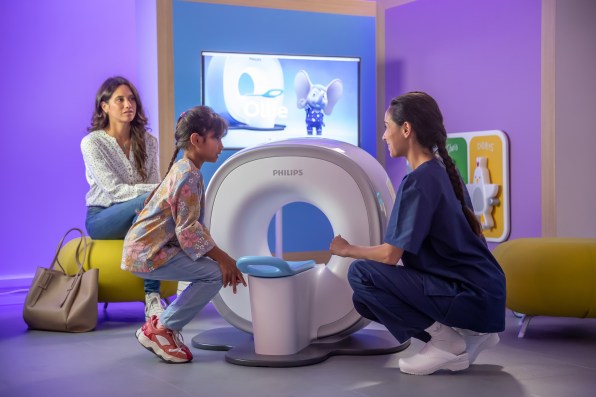
This mission is particularly coming through in two areas of the hospital: radiology, where Carney’s team is helping young patients be more comfortable with MRIs, and the emergency department, where Philips is creating an adaptive environment for pediatric behavioral health patients. These efforts have won Philips two 2022 Innovation by Designs Awards: User Experience, for its work making pediatric MRIs less daunting, and Health, for its efforts to re-imagine the behavioral health experience for children.
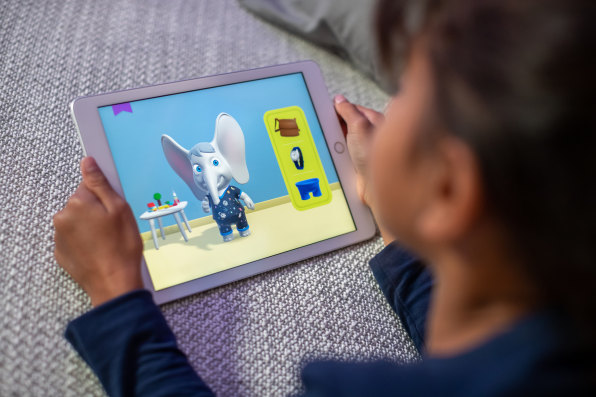
MRIs are tough on young patients and hospital staff. The scan can be particularly scary for children sensitive to small spaces and loud noises (sound levels during a scan can hit as high as 130 decibels), and a nervous patient can affect the quality of a scan and delay a crammed radiology schedule. Typically, radiologists will sedate nervous patients, which helps get a clear image, but “there’s a risk of using anesthesia with anybody, especially children,” Carney says. To minimize the need for sedation, the Philips design team sought an approach to reassure these patients about the MRI process.
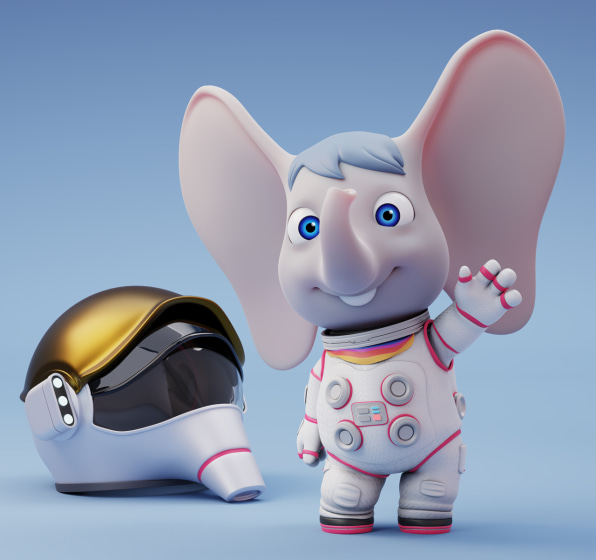
The result is a gamified experience that acquaints children with how an MRI works even before they show up to the radiology department. Using an app, kids can watch videos featuring an elephant named Olly who has to get an MRI just like they do. And if they want to really immerse themselves, the app uses augmented reality to render an Olly-sized scanner in their own space. Once at the hospital, they can perform a scan on Olly themselves using a scaled-down MRI machine while watching a video of what it finds inside Olly. During the real MRI, Olly guides patients through the scan.
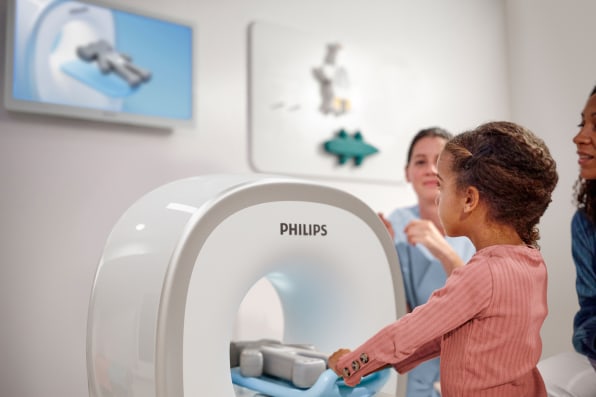
As a result of the coaching program, kids “feel a little bit more familiar with what’s going to happen and there’s less surprise when they get there,” Carney says, adding that more than 100 hospitals worldwide have installed the mini-scanner system, which includes the gamified app. “It also helps streamline the operations of a busy radiology department and reduce the stress levels on staff in the hospital.”
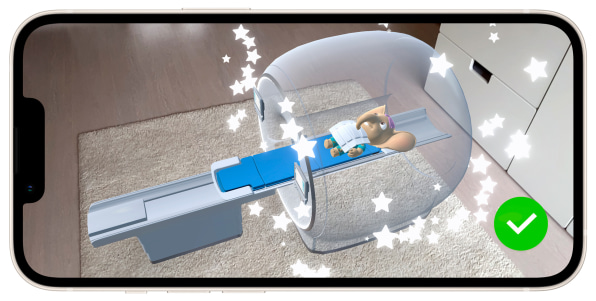
Besides the content for younger children, Philips’s solution includes experience-enhancing features inside the MRI scanner for older pediatric patients. Designed in concert with psychologists and clinicians, tools include light therapy and video content, as well as a soothing voice-over explaining the process and instructing them when to hold their breath and for how long.
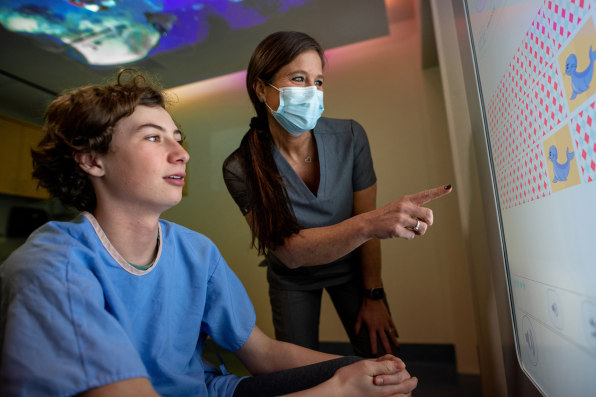
Beyond the radiology department, Philips is bringing calming patient-experience tools to the emergency department in light of a pandemic-driven uptick in emergency room visits from children and adolescents having mental health crises.
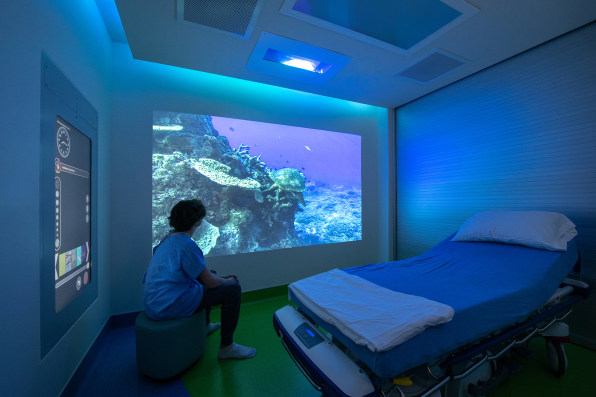
“EDs are trauma centers by definition; they’re more suited to treating traffic accidents or a broken arm, not a mental health crisis,” Carney says, adding that because beds were limited due to COVID-19, children admitted for behavioral crises were kept in the ED instead of getting a separate room. “It’s just not conducive to a de-escalation of the problem because there’s noise, there are lights going off, there’s lots of stimulus.”The design team worked with psychologists and ED doctors and nurses to translate their learnings from the MRI experience to the ED, turning small, windowless emergency rooms into calming spaces for children in crisis. “That was the start point, but then we went beyond that, then we started to think about how we can engage them and give them positive distractions like playing games in order to bring them down a level and give them a feeling of control.”
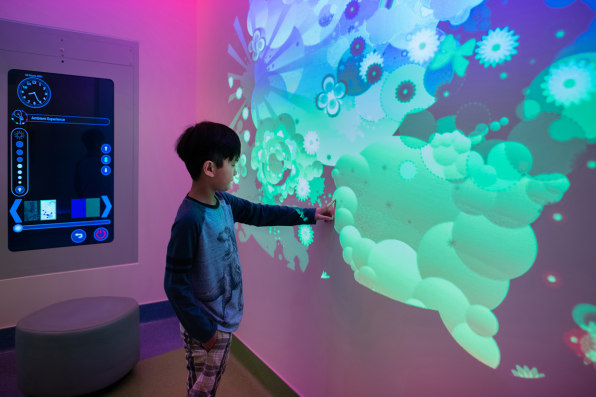
The result was what Philips calls the Behavioral Health Experience solution. It uses a customizable touchscreen with games, a TV, music, and video chat capabilities to engage patients. After an initial three-hospital pilot in Texas, Philips added a fourth Texas hospital and now has 20 facilities demanding the solution, which Carney says is a testament to the lean approach his team uses, and its ability to focus on the big picture.“At the end of the day, my team is in a really unique position to think about end-to-end experiences, because we’re not constrained by just doing an app or a physical product,” he says. “Nobody wants to be in a [hospital] but we can try to get them through it so they feel in control, they understand what’s coming and what’s happening to them, and that will help them along the journey.”
This article is part of Fast Company’s 2022 Innovation by Design Awards. Explore the full list of companies creating products, reimagining spaces, and working to design a better world.





































